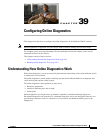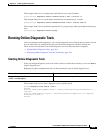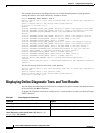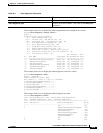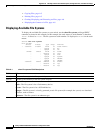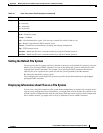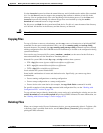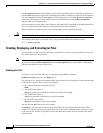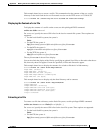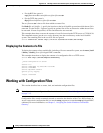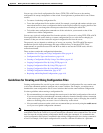
A-2
Catalyst 2960 and 2960-S Switch Software Configuration Guide
OL-8603-09
Appendix A Working with the Cisco IOS File System, Configuration Files, and Software Images
Working with the Flash File System
• Copying Files, page A-5
• Deleting Files, page A-5
• Creating, Displaying, and Extracting tar Files, page A-6
• Displaying the Contents of a File, page A-8
Displaying Available File Systems
To display the available file systems on your switch, use the show file systems privileged EXEC
command as shown in this example. In this example, the stack master is stack member 3; therefore
flash3: is aliased to flash:. The file system on stack member 5 is displayed as flash5 on the stack
master.
Switch# show file systems
File Systems:
Size(b) Free(b) Type Flags Prefixes
* 15998976 5135872 flash rw flash:flash3:
- - opaque rw bs:
- - opaque rw vb:
524288 520138 nvram rw nvram:
- - network rw tftp:
- - opaque rw null:
- - opaque rw system:
- - opaque ro xmodem:
- - opaque ro ymodem:
15998976 645120 unknown rw flash5:
- - network rw rcp:
- - network rw ftp:
Table A-1 show file systems Field Descriptions
Field Value
Size(b) Amount of memory in the file system in bytes.
Free(b) Amount of free memory in the file system in bytes.
Type Type of file system.
flash—The file system is for a flash memory device.
nvram—The file system is for a NVRAM device.
opaque—The file system is a locally generated pseudo file system (for example, the system) or a download
interface, such as brimux.
unknown—The file system is an unknown type.




